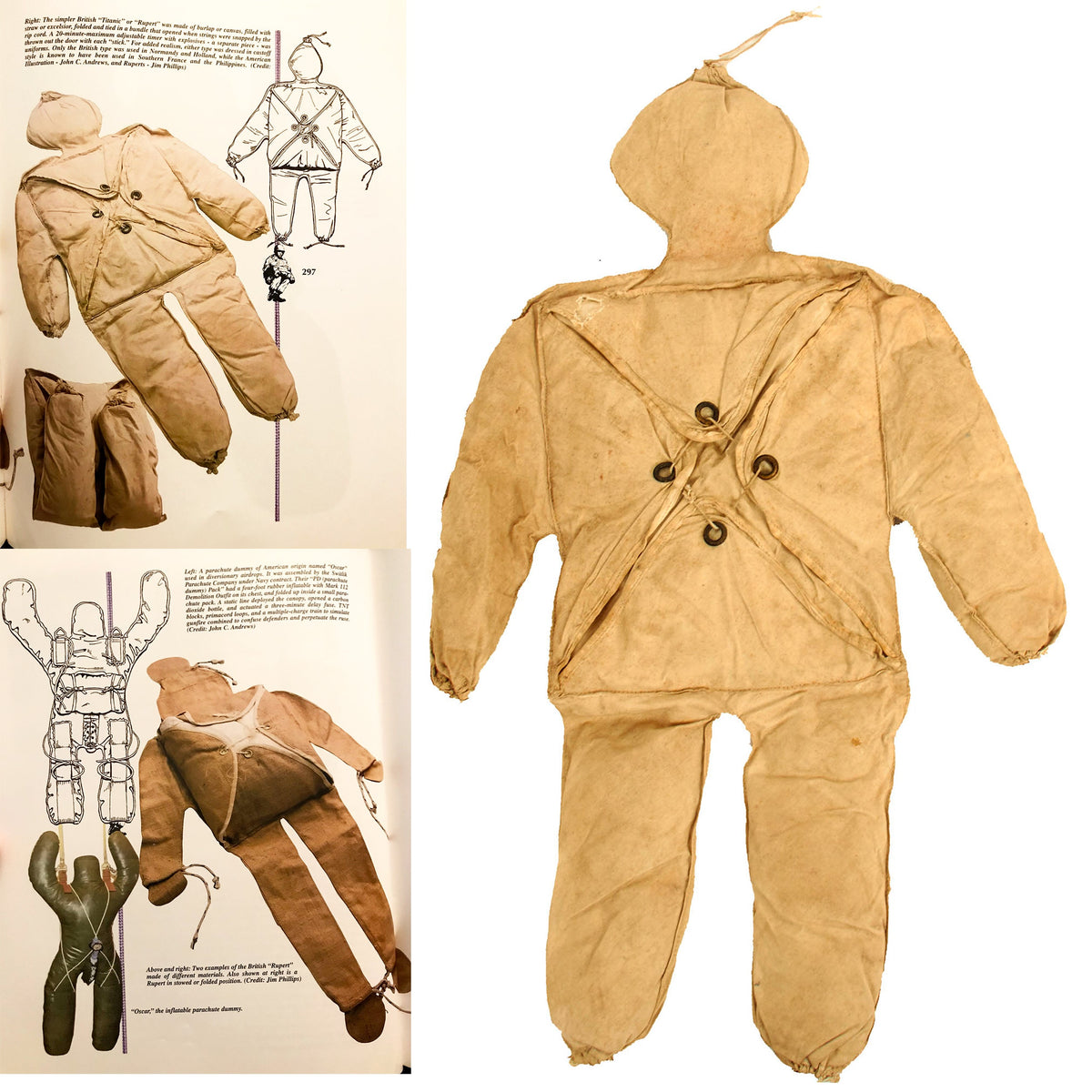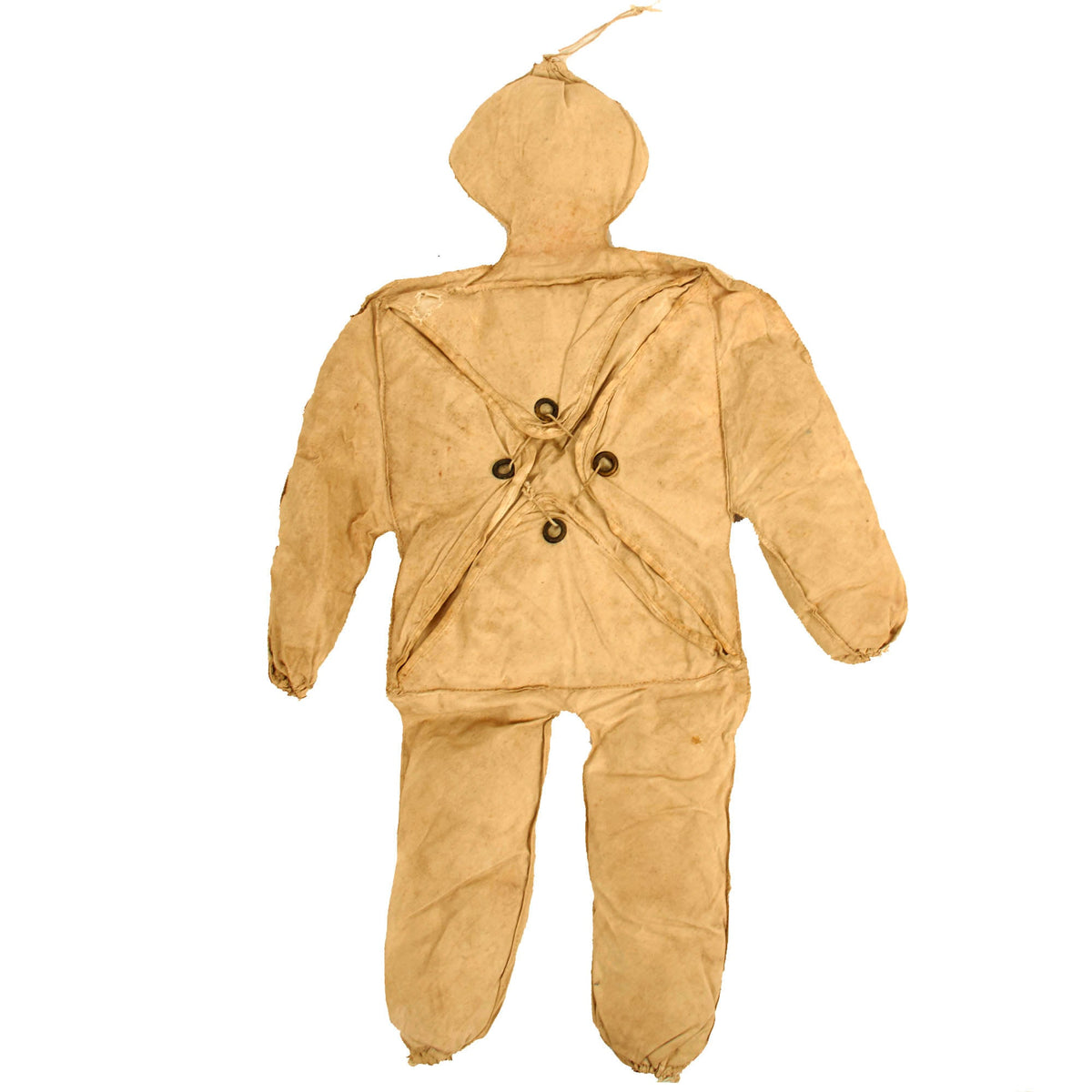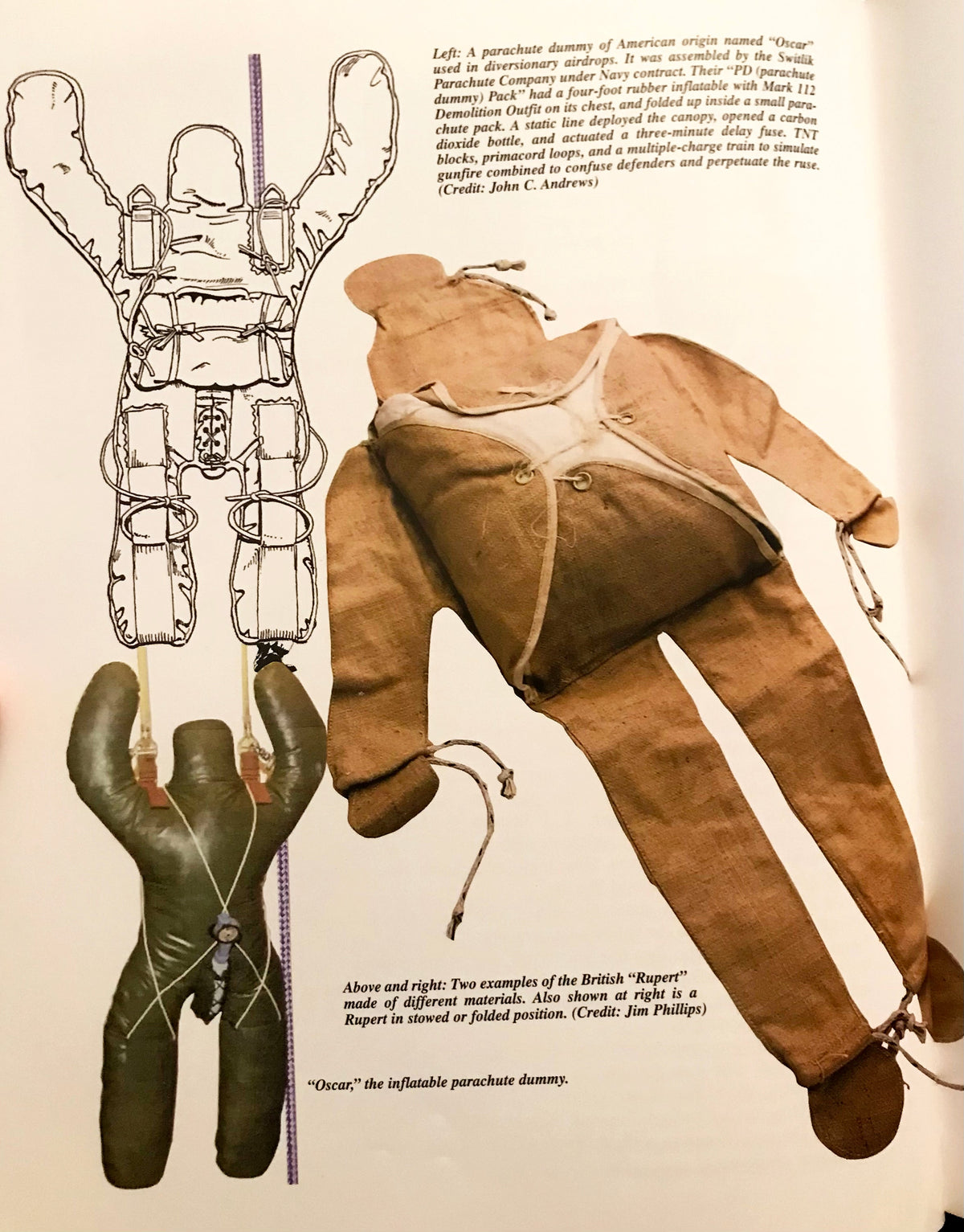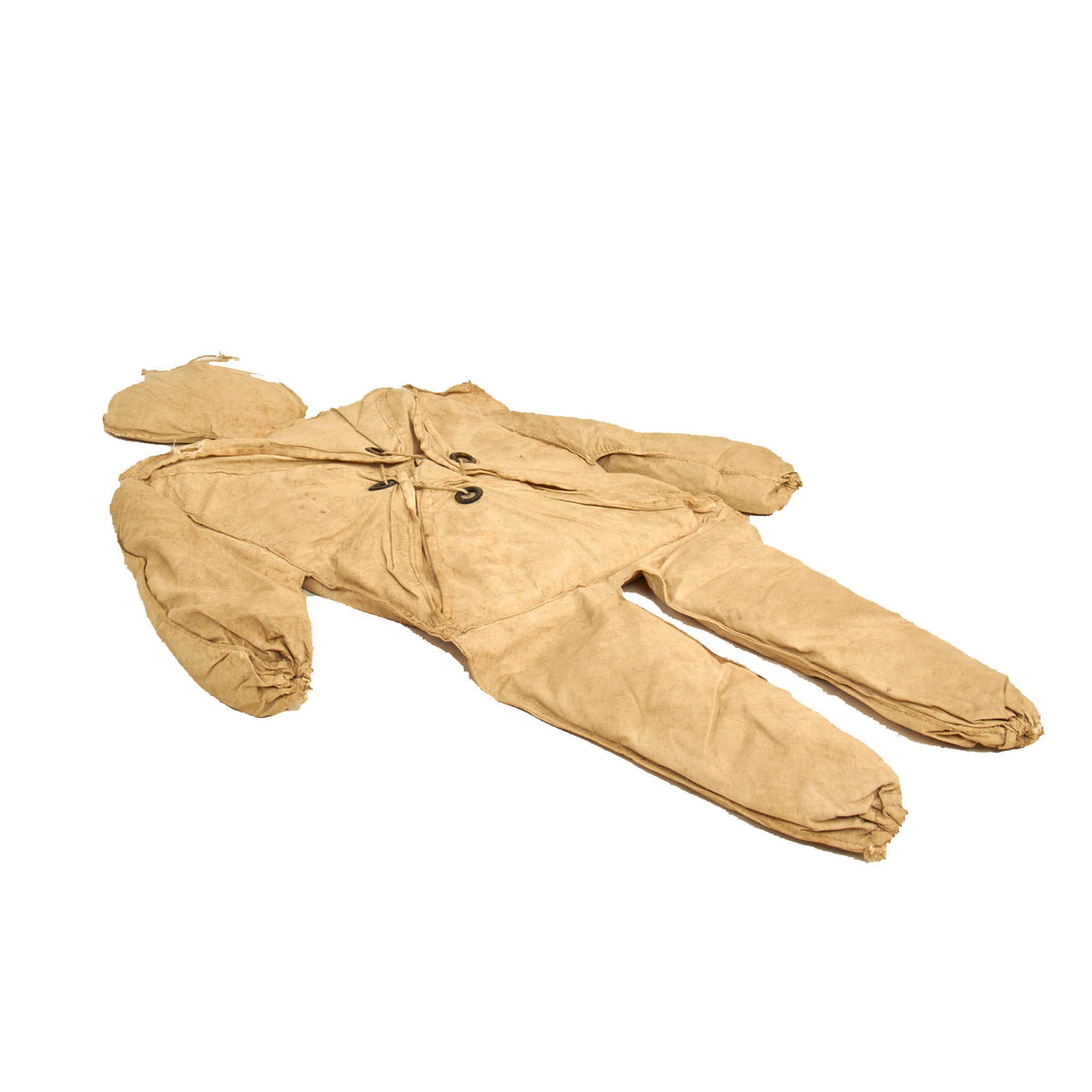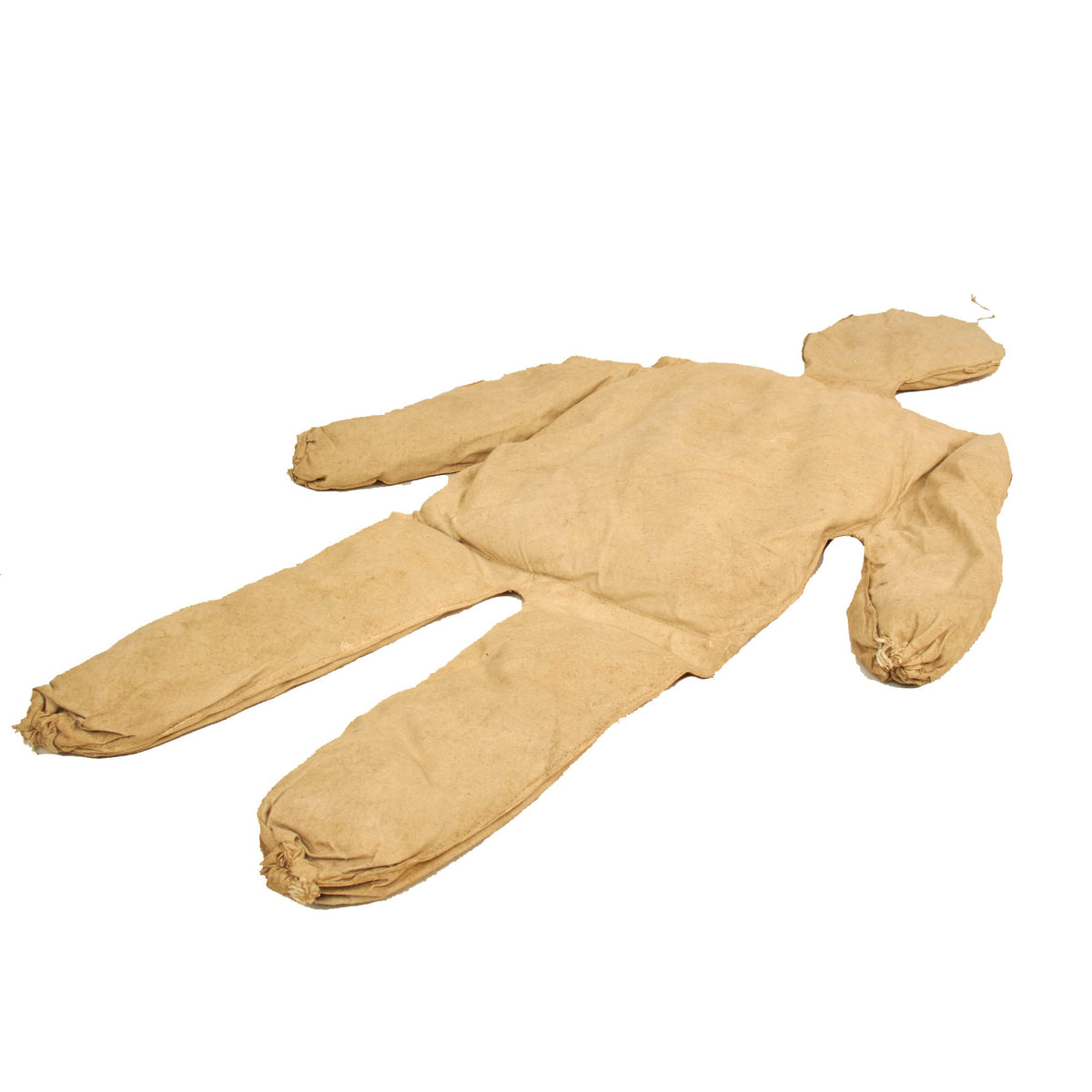Original British WWII “Rupert” Paradummy Military Deception Device As Used During Operation Titanic – As Seen In “Heroes In Our Midst” Pages 296-297 Original Items
$ 3.995,00 $ 998,75
Original Item: Only One Available. This is an excellent example of the simple British “Titanic” or “Rupert” paradummy whichwas made of a burlap or canvas type material and filled with what appears to be straw. It was folded and tied in a bundle that opened when the strings we snapped by the rip cord. A 20 minute maximum adjustable timer with explosives, which was a separate piece, was thrown out the door with each “stick”. For added realism, either type was dressed in castoff uniforms. Only the British type was used in Normandy or Holland, while the American style is known to have been used in Southern France and the Philippines.
A nearly identical example was featured in the fabulous book series “Heroes In Our Midst” in volume 1 pages 296-297 by Ltc. (Ret.) John R. Angolia.
This example is in wonderful condition and shows no signs of any extensive damage present. There are stains present in the material but there are no signs that can tell if it was actually used and possibly recovered. There is no parachute included.
A paradummy is a military deception device first used in World War II, intended to imitate a drop of paratroop attackers. This can cause the enemy to shift forces or fires unnecessarily, or lure enemy troops into staged ambushes. The dolls used for Operation Titanic were nicknamed Rupert by British troops and Oscar by American. The official name was “Device Camouflage No. 15”. They were made of burlap and filled with straw or green waste. Some were found in a warehouse on an old British airfield in the 1980s. Some of the original dolls from this find are now exhibited in war museums. The dolls are immobile and about 85 cm tall, consequently smaller than a person, but on the ground during twilight it is difficult to tell the difference between real parachutists. In addition, real parachutists let themselves be hung motionless on the ropes during the jump, so that the ground troops could not tell them apart from real jumpers or comrades who had already been shot in the air.
Fast Shipping with Professional Packaging
Thanks to our longstanding association with UPS FedEx DHL, and other major international carriers, we are able to provide a range of shipping options. Our warehouse staff is expertly trained and will wrap your products according to our exact and precise specifications. Prior to shipping, your goods will be thoroughly examined and securely secured. We ship to thousands clients each day across multiple countries. This shows how we're dedicated to be the largest retailer on the internet. Warehouses and distribution centres can be located throughout Europe as well as the USA.
Note: Orders with more than one item will be assigned a processing date depending on the item.
Before shipping before shipping, we'll conduct a thorough inspection of the items you have ordered. Today, the majority of orders will be delivered within 48 hours. The delivery time will be between 3-7 days.
Returns
The stock is dynamic and we cannot completely manage it because multiple stakeholders are involved, including our factory and warehouse. So the actual stock may alter at any time. It's possible that you may not receive your order once the order has been made.
Our policy is valid for a period of 30 days. If you don't receive the product within 30 days, we are not able to issue a refund or an exchange.
You can only return an item if it is unused and in the same state as the day you received it. You must have the item in its original packaging.
Related products
Uncategorized
Uncategorized
Uncategorized
Uncategorized
Uncategorized
Uncategorized
Uncategorized
Uncategorized
Uncategorized
Uncategorized
Band of Brothers ORIGINAL GERMAN WWII Le. F.H. 18 10.5cm ARTILLERY PIECE Original Items
Uncategorized
Uncategorized
Uncategorized
Uncategorized
Uncategorized
Uncategorized
Armored Burgonet Helmet & Polearm from Scottish Castle Leith Hall Circa 1700 Original Items
